How to Make Cultured Butter
Learn how to make cultured butter (and real buttermilk) at home with this easy recipe and how-to guide.
Look at that glorious butter slab! If you’ve stuck around here for any length of time, you know that I’m not one to shy away from butter.
Several years ago, I wrote a lengthy (there is no other word for it!) guide on how to make clarified butter, ghee, and brown butter at home. It seems only right to take it one step further.
Today I’m sharing how to make cultured butter! I absolutely love to share these types of recipes as the process is often so much easier and more enjoyable than people might realize.
If you’ve never tried or heard of cultured butter, you’re in for a treat! Both literally and figuratively.
I started making homemade cultured butter when I started my sourdough bread baking journey a year ago. After sharing some behind-the-scenes videos of the process on Instagram, I got so many requests to share a step-by-step guide and recipe. Let’s do this!
What is Cultured Butter?
Cultured butter is made from cultured cream. In other words, cream that contains live bacterial cultures and has fermented for a period of time.
Similar to yogurt, cultured butter has a slightly tangy flavor that sets it apart from regular butter.
It has a unique flavor that enhances just about everything. Keep it simple and slather cultured butter on sourdough bread (my personal favorite!) or use it in lieu of regular butter in your favorite baked goods or savory dishes.
While store-bought cultured butter is much easier to find these days, it is extremely easy and fun to make cultured butter at home! It’s significantly cheaper too.
To make cultured butter, you’ll need just two basic ingredients.
Ingredients You’ll Need:
- High-Quality Heavy Cream (*not ultra-pasteurized) – you can’t make butter without heavy cream! You’ll need heavy cream that is not ultra-pasteurized for this recipe. Ultra pasteurized cream and whipping creams often contain thickeners and gums, and can encounter issues during culturing. Since we’re going to the trouble of making butter from scratch, I highly recommend seeking out the best quality cream that you can get your hands. 100% grass-fed will yield the best flavor, color, and nutritional profile.
- Cultured Buttermilk – or Plain Unsweetened Yogurt with Cultures, Cultured Sour Cream, or Cultured Creme Fraiche – while traditional butter is made from cream, homemade cultured butter is made from cream that has added live bacterial cultures. Traditional cultured butter is made from heavy cream to which we have added cultured buttermilk (or cultured sour cream or creme fraiche). Plain unsweetened yogurt with live cultures works just as well. Use whatever you already have on hand or already buy regularly! Future batches of cultured butter can be made from any leftover homemade buttermilk.
Equipment:
- tight-lidded container, fine-meshed sieve, mixing bowl, spatula, and stand mixer with whisk attachment (you can also use a food processor or even shake the cream by hand)
How to Make Cultured Butter
Culture the Cream:
Combine the cream and culturing agent (cultured buttermilk, plain unsweetened yogurt with live cultures, or cultured sour cream or creme fraiche) in a lidded container.
Allow mixture to sit at room temperature – roughly 70 degrees to 75 degrees Fahrenheit – for at least 24 hours and up to 48+ hours. The mixture will thicken and have a stronger, more pronounced tangy flavor as it ferments. It will sour and become significantly thicker in texture.
Transfer the cream mixture to the refrigerator to chill for at least one hour. This will ensure that the butterfat will stay firm and not become greasy during churning.
Churn in a Stand Mixer:
Place the chilled cream mixture in the bowl of stand mixer fitted with a whisk attachment.
Cover the stand mixer with a clean kitchen towel (this will help absorb any splattering) and whip over medium-high speed until the mixture has thickened and has the texture of a soft whipped cream.
Note: If you don’t own a stand mixer, you can use a large food processor or use your arm muscles and shake the cream in a large jar!
Reduce the mixer speed to medium-low and continue whipping until the liquid and butter fat just begin to separate and it looks curdled.
Reduce speed to low – be sure to cover the mixer as it can splatter considerably at this stage – and continue whipping until the butter comes together as a solid mass on the whisk attachment.
Strain the Buttermilk:
Set a large fine-meshed sieve over a large mixing bowl. You can line the sieve with muslin, but I do not find this step necessary. Gently pour over the liquid (this is real buttermilk!) then transfer the mass of butter to the sieve. Using a spatula, gently press the butter against the sieve to release any additional liquid – without pushing the butter through the sieve.
Transfer the buttermilk to a covered container and refrigerate. Homemade buttermilk can be stored in the fridge for one to two weeks.
Wash the Butter:
Meanwhile, transfer the mass of butter to the empty mixing bowl. At this step, we will wash the butter repeatedly with very cold water, pressing the butter to release any excess buttermilk. Strain, wash, repeat.
The cold water helps to firm up the butter and washing helps remove any excess buttermilk from the butter. This will prevent it from spoiling and extend its storage life.
Once the water runs clear and you have drained the liquid, press the butter once more to release any excess water. If you desire, you can use clean hands to do this but this isn’t required.
Add Salt If Desired:
At this stage, you can choose to mix and stir in salt or other seasonings, if desired. I prefer not to salt my cultured butter (and sprinkle salt after using, etc.) as it can mask the delicious tangy flavor.
Wrap and Store the Cultured Butter:
Divide the butter in half – this recipe makes roughly 12 ounces of cultured butter – shape as desired, wrapping the butter in wax paper. Store well-wrapped in the refrigerator for up to a month (or longer) or freeze for later use.
Ways to Use Cultured Butter:
- slather on homemade sourdough bread, waffles, pancakes, or my easy whole wheat biscuits
- fold into my favorite Yukon gold mashed potatoes
- make homemade cultured compound butter infused with your favorite seasonings or herbs
- use in lieu of traditional butter in your favorite baked goods
- enhance and add a touch of tang to savory dishes or sauces
An extra bonus of making cultured butter from scratch is that you’ll make real buttermilk in the process! The flavor is unparalleled. Use it in buttermilk pancakes, waffles, or other dishes. Here are handful of my favorite recipes that use buttermilk.
Ways to Use Leftover Buttermilk:
- Easy Blueberry Muffins
- Whole Wheat Apple Cinnamon Muffins
- Easy Whole Wheat Biscuits
- Irish Soda Bread Scones
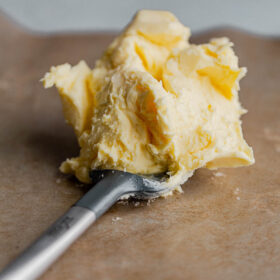
Homemade Cultured Butter
Ingredients
- 1 quart (4 cups; 960 mL) high quality heavy cream not ultra pasteurized; no stabilizers added
- 3 tablespoons (45 mL) cultured buttermilk or plain unsweetened yogurt with live cultures, or even cultured sour cream or creme fraiche
- ¼ teaspoon kosher salt optional
Instructions
- Culture the Cream: Combine the cream and culturing agent (cultured buttermilk, plain unsweetened yogurt with live cultures, or cultured sour cream or creme fraiche) in a lidded container. Stir to combine.
- Allow the cream mixture to sit at room temperature, between 70°F to 75°F (21°C-24°C), for at least 24 hours and up to 48+ hours. The mixture will thicken and have a stronger, more pronounced tangy flavor as it sits. It will sour and become significantly thicker in texture with time.
- Transfer the cream mixture to the refrigerator and chill for at least one hour. This will ensure that the butter fat will stay firm and not become greasy during churning.
- Churn: Place the chilled cream mixture in the bowl of stand mixer fitted with a whisk attachment (note: you can also use a large food processor or even shake the cream by hand if you're up to it!). Cover the stand mixer with a clean kitchen towel (this will help prevent any splattering) and whip over medium-high speed until the mixture has thickened and has the texture of a soft whipped cream.
- Reduce the mixer speed to medium-low and continue whipping until the liquid and butter fat just begin to separate and it looks curdled. Reduce speed to low - be sure to cover the mixer as it can splatter considerably at this stage - and continue whipping until the butter comes together as a solid mass on the whisk attachment.
- Strain: Set a large fine-meshed sieve over a large mixing bowl. You can line the sieve with muslin, but I do not find this step necessary. Gently pour over the liquid (this is real buttermilk) then transfer the mass of butter to the sieve. Using a spatula, gently press the butter against the sieve to release any additional liquid - without pushing the butter through the sieve. Transfer the homemade buttermilk to a covered container and refrigerate. The buttermilk can be stored in the fridge for one to two weeks.
- Wash: Meanwhile, transfer the mass of butter to the now empty mixing bowl. At this step, we will wash the butter repeatedly with very cold water, pressing the butter to release any excess buttermilk. Strain, wash, repeat. The cold water helps to firm up the butter and washing helps press out any excess buttermilk from the butter, which will extend it's storage life in the fridge.
- Pour 1 cup (240 mL) of very cold water over the butter and using the back of a spatula (or spoon), press the butter repeatedly against the edge of the bowl. Drain, discarding any liquid, and repeat until the water runs clear. This will take anywhere from 4 to 6 washes. Be sure to err on the side of overwashing. Once the water runs clear and you have drained the liquid, press the butter once more to release any excess water. If you desire, you can use clean hands to do this - but it isn't necessary or required.
- Add Salt If Desired: At this stage, you can choose to mix and stir in salt or other seasonings, if desired. I prefer not to salt my cultured butter (and sprinkle salt after using, etc.) as it can mask the tangy flavor.
- Store: Divide the butter in half - this recipe yields roughly 12 ounces of cultured butter - shape as desired, wrapping the butter in wax paper. Store well-wrapped in the refrigerator for up to a month (or longer) or freeze for later use.
Storage Tips:
- Cultured butter can be wrapped well and stored in the refrigetator for up to a month (or longer) and can also be frozen and thawed for later use.

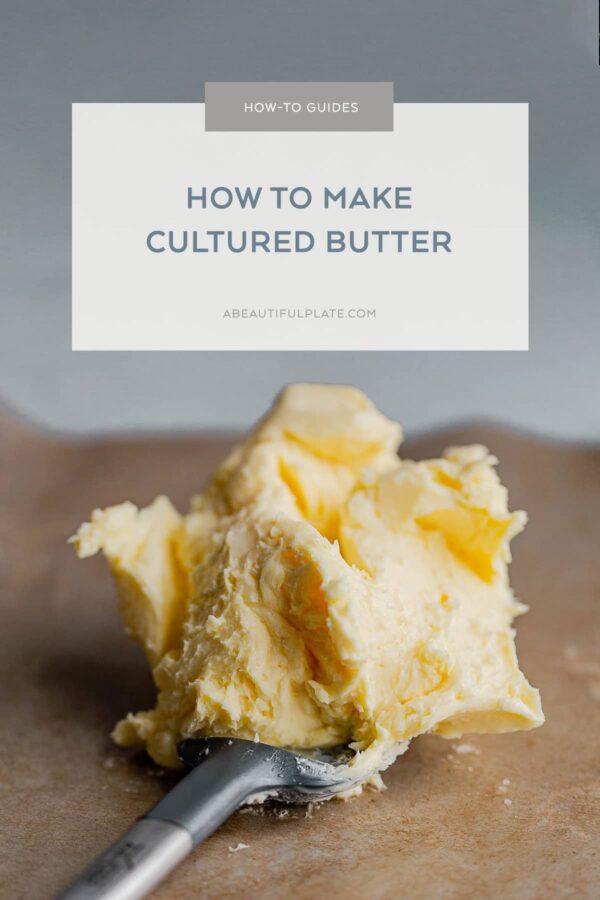
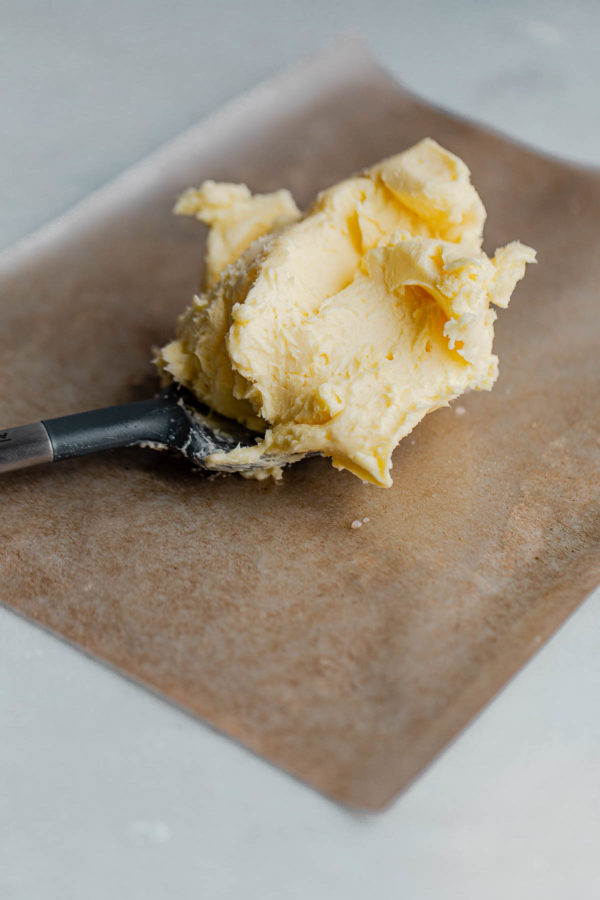
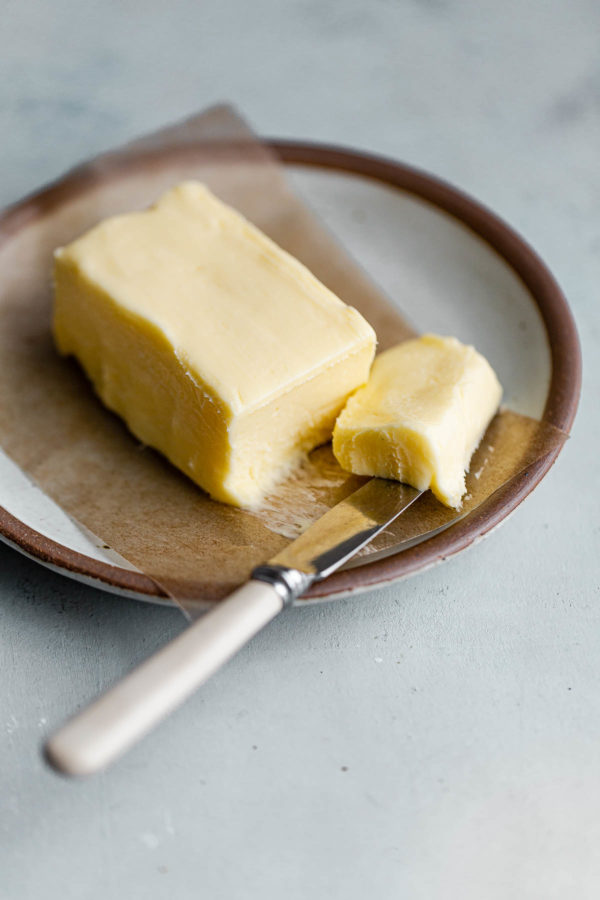
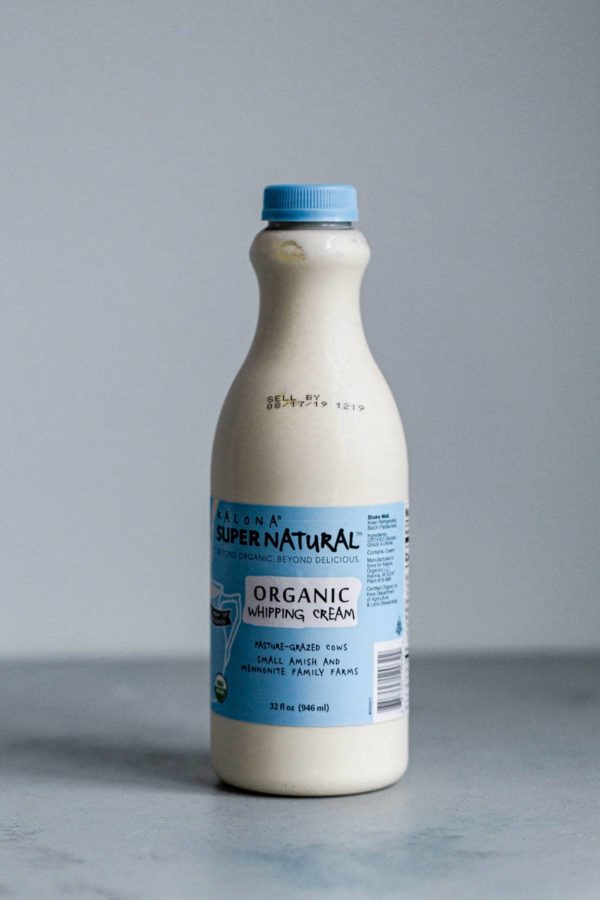
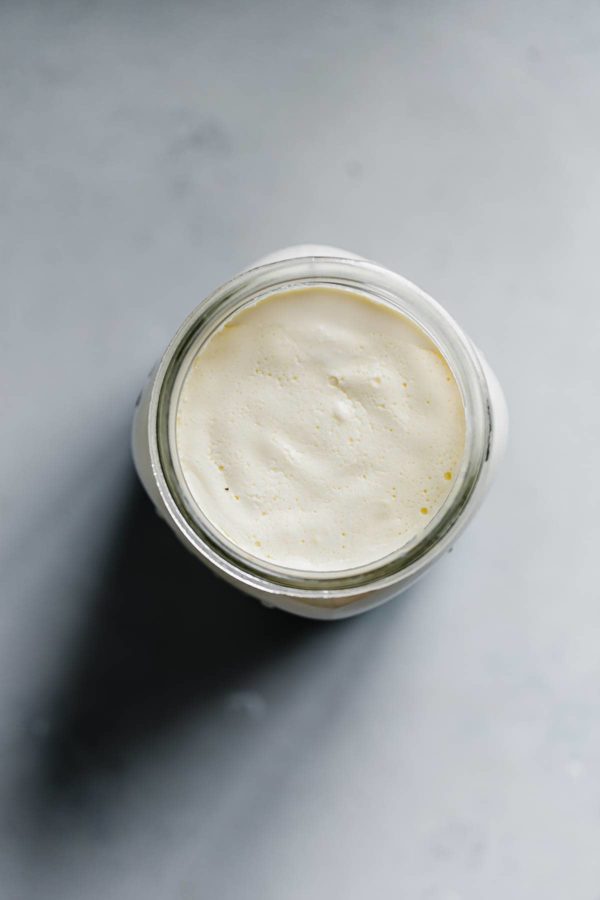
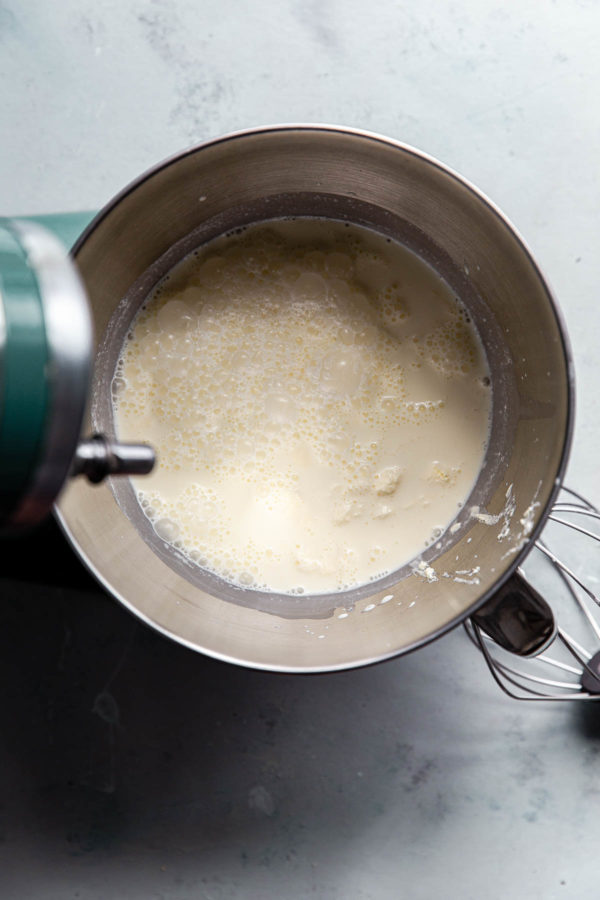
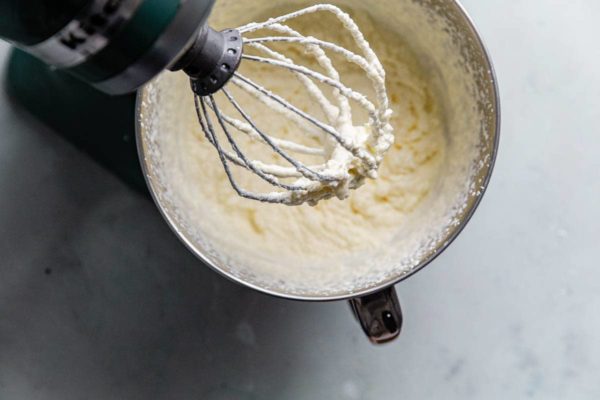
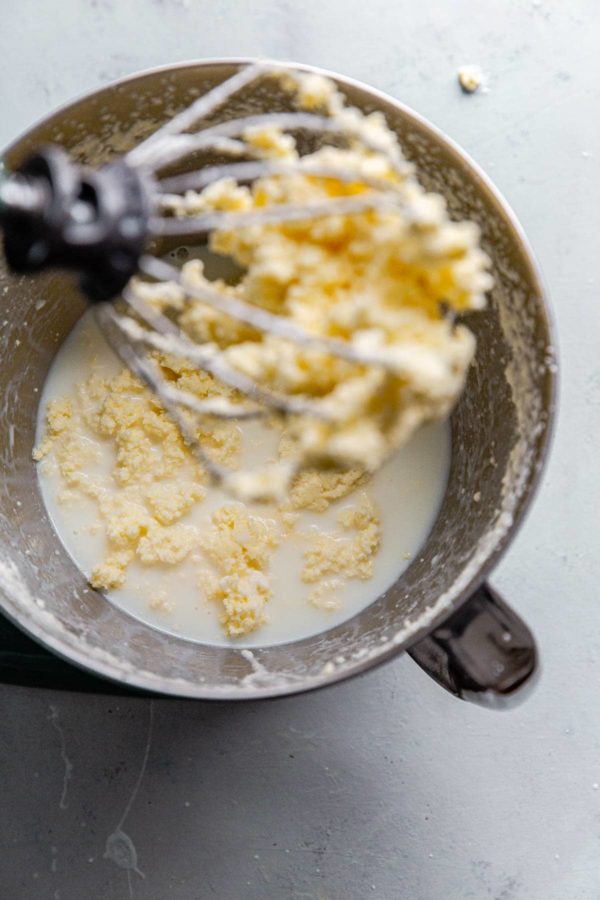
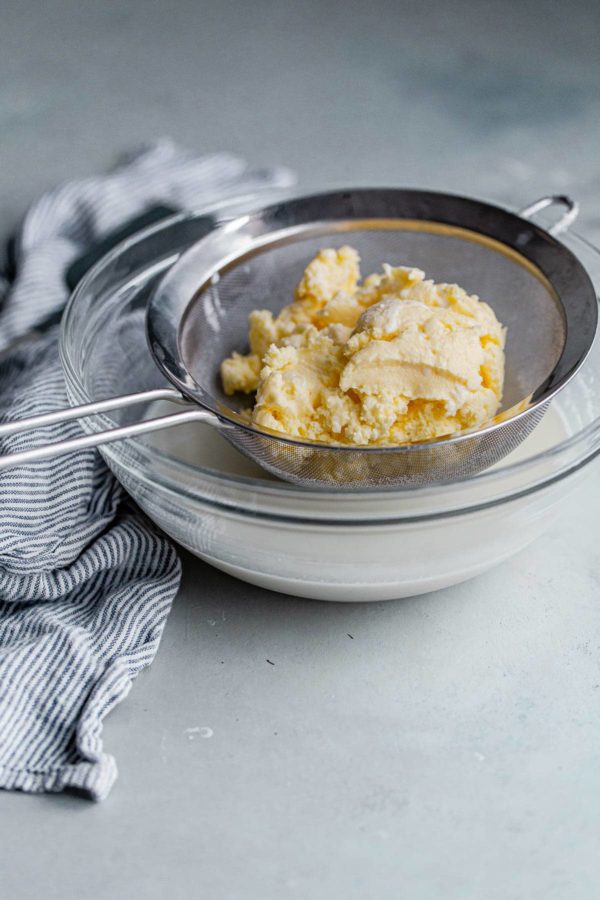
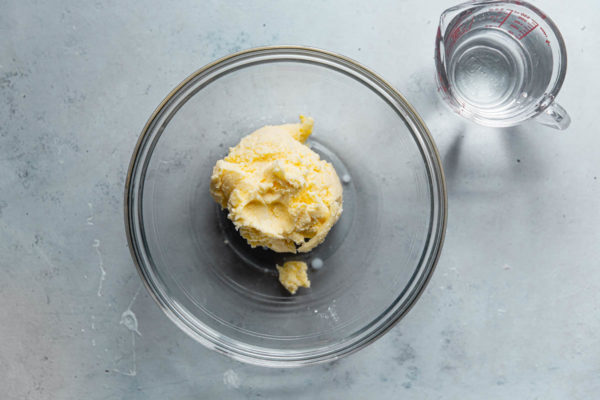
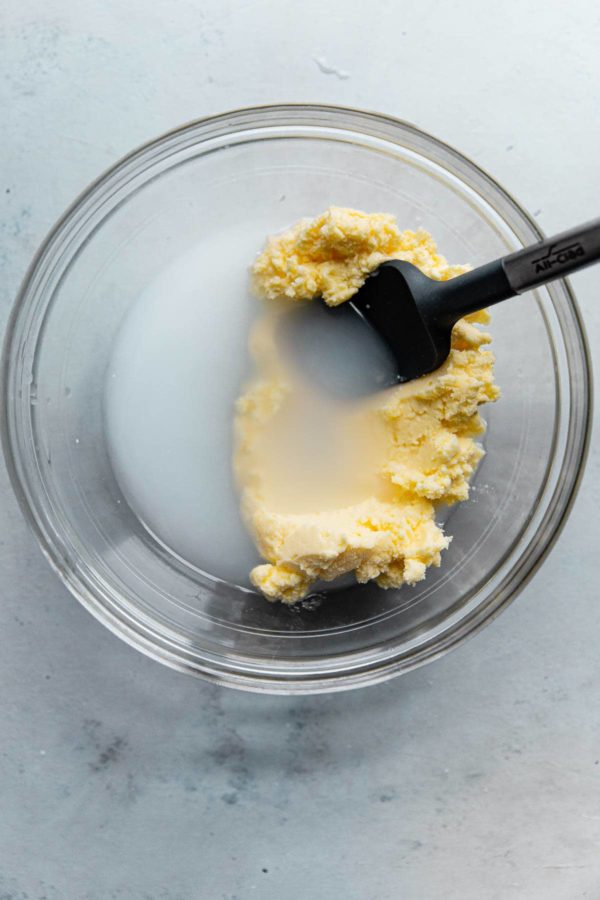
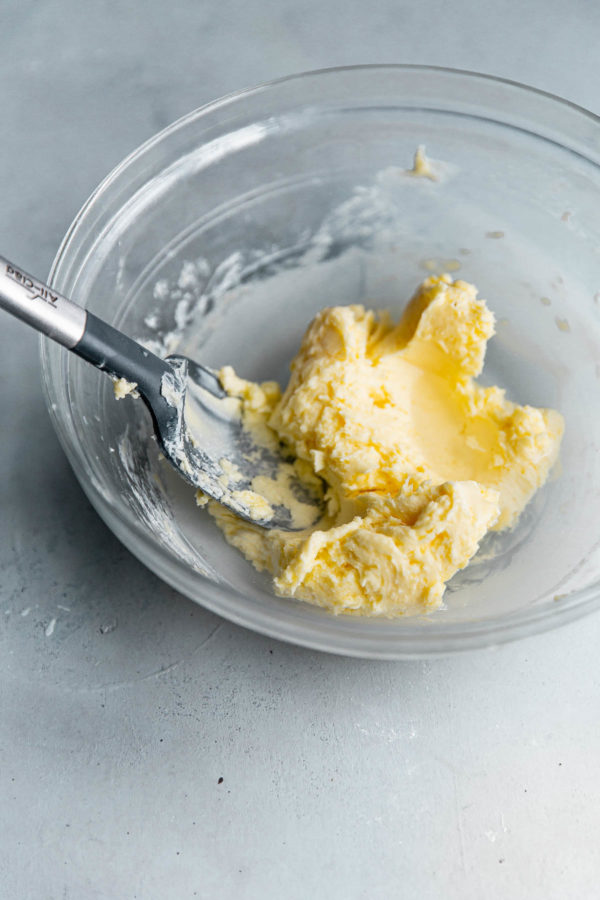
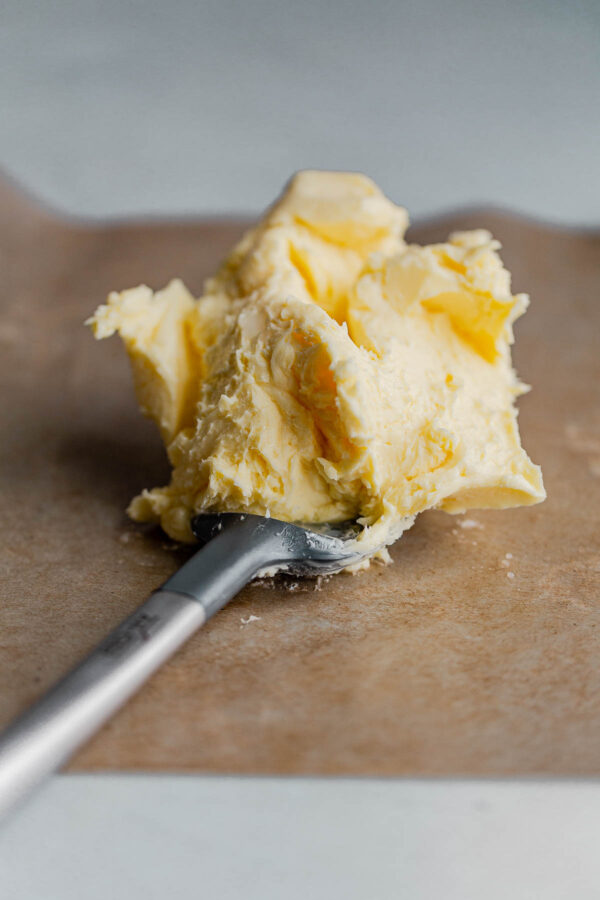
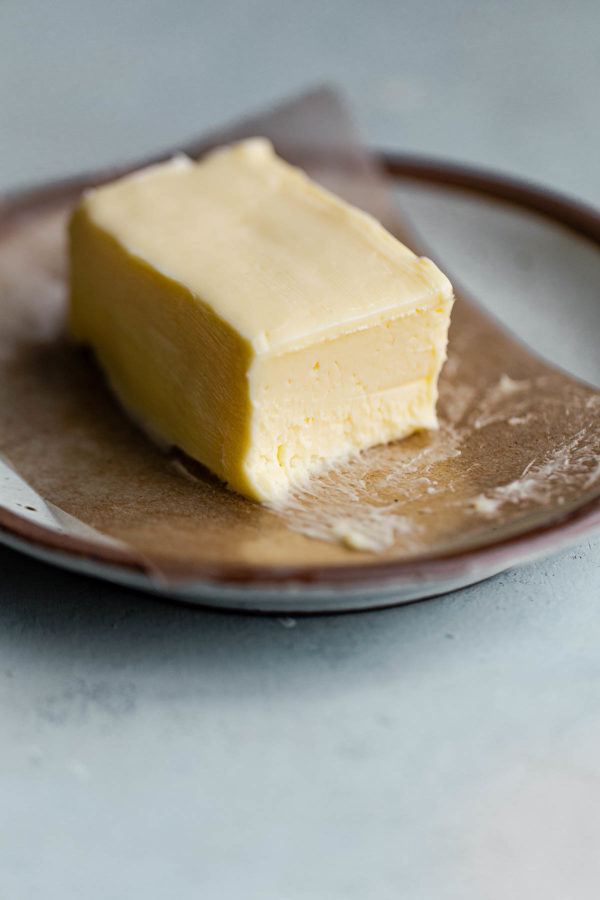
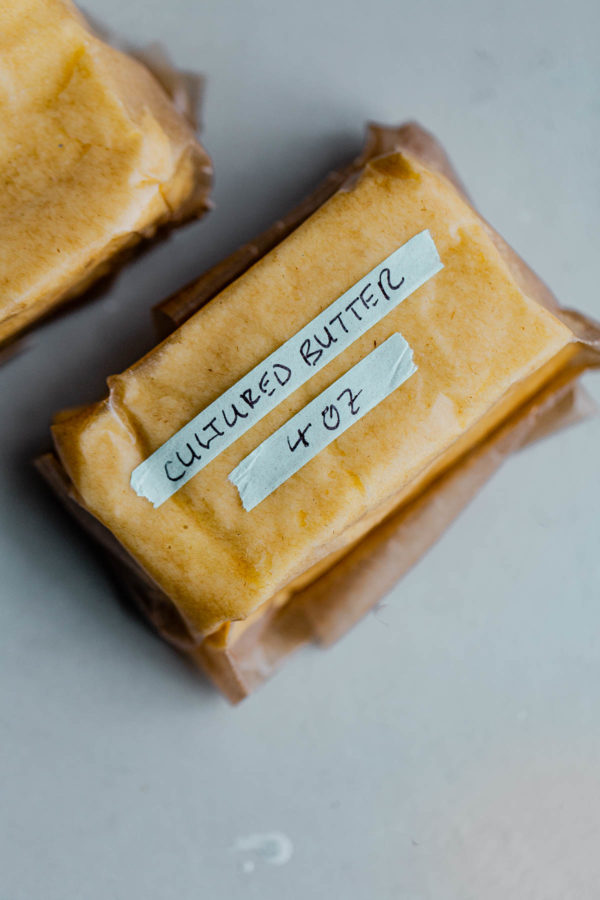
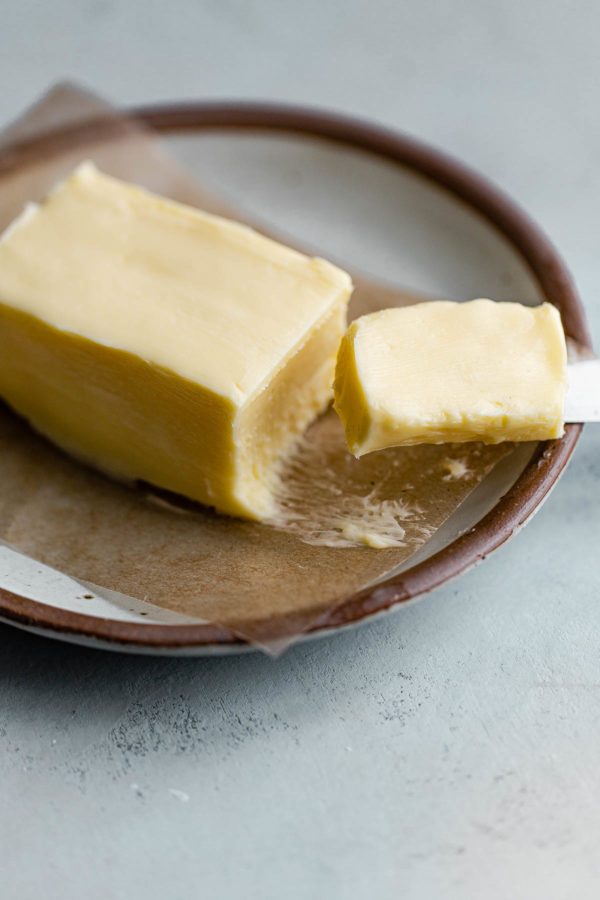
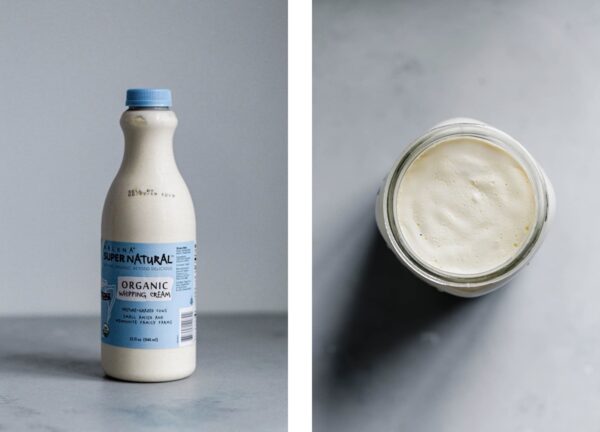
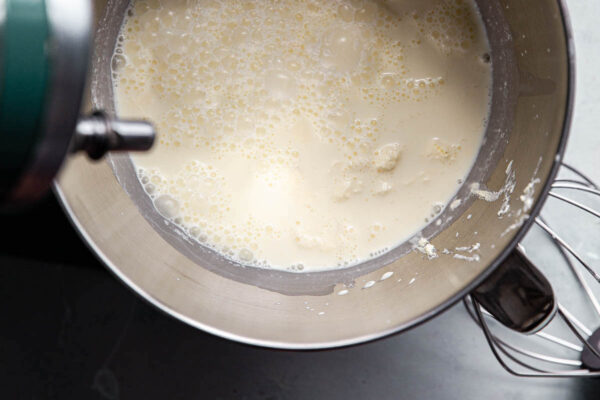

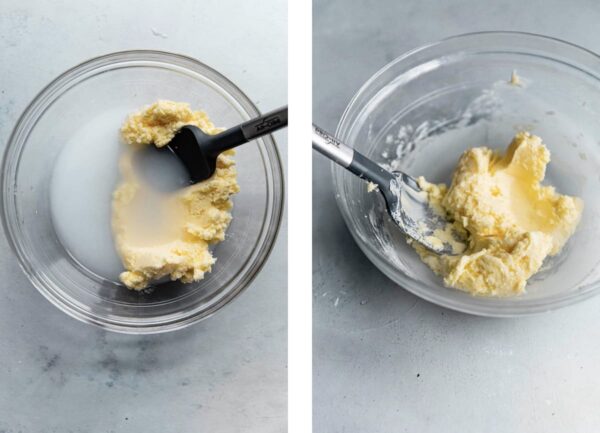
80 Comments on “How to Make Cultured Butter”
Can you use the Buttermilk in salad dressings?
Definitely! You can use it the same way you’d use any store bought carton, just remember that the dressing should be obviously stored in the fridge as you would normally.
Followed recipe and it came out as it should. Comment of letting it whip longer was helpful. 3 stars because it didn’t taste any better than store bought. I let it sit for 48 hours and it certainly smelled tangy. I used high fat, high quality pasteurized whipping cream from the health food store. More work than I would do again for no increase in flavor. Comment of letting it whip longer, possibly 45 minutes was helpful.
This is a tutorial for how to make it at home, the flavor will all depend on the cream that you use – if you don’t notice a flavor difference that is worth the labor, than that’s valid, but I don’t see why you’d rate the recipe based on the that. You should rate the tutorial based on the quality of the instructions and whether it turned out accordingly.
Thank you so much for posting this! I am going to use your recipe this weekend and I can hardly wait. Do you think it would make any difference to chill the mixing bowl? I keep my mixing bowl in the freezer for when I make pie crust.
It might speed up the process a bit, but it shouldn’t matter much for this.
Just general query, can you use kefir as the culture agent
Yes, you could do this. Again as long as there are active cultures.
I just made a batch using 1l 31% heavy cream and just under 1/4 cup buttermilk, and letting it do it’s thing for 36 hours.
It is incredible!
This isn’t the first time I’ve made butter, but this is a hell of a lot easier than churning or shaking by hand!
Thanks!
Question for you…If you’re making cultured butter…and want to make it compound as well…can you do that at the culturing phase…or do you need to wait until you make the butter and then add your flavors to the completed butter?
Very specifically…I have a batch of dried morels and want to make a mushroom compound butter. I know doing this after would be fine…but that little voice in my head says “the flavor would be more intense if the mushrooms sat in the culturing cream for 24-48. hours!” The other little voice in my head says; “this is a very bad idea…”
Great recipe 🤗 But, how to you create your next batch of cultured butter using the left over buttermilk?
If your cream is super thick and you like cream cheese, it’s made the same way EXCEPT you do not rinse it. Pour it in a cheese cloth or flour sack towel and hang it over a bowl for 6 to 12 hours to drain. Best cream cheese ever.
Love this idea! Thank you for sharing!
Ultra pasteurized heavy cream works just fine. I make and sell about 30 lbs of it a week for family and friends.
Replying to Sophie: My cream developed 1 tiny blue speck after 48 hrs (I wanted extra tangy) and it was also thicker, like wet sour cream consistency but, my kitchen smelled unbelievable of sweet cream turning sour. It churned exactly as described then finished with a pinch of Colima salt flakes. When done, butter was INCREDIBLY smooth, sweet and tangy.
AWESOME RECIPE!!!!!
Hi, I am not a cook or baker, that said… everything looks good, one question though, does not all yogurt & sour cream have cultures or does is need to say with “live cultures” on the label?
Thank you!
Hi Jeff,
Sadly no, many yogurts and sour creams don’t contain active cultures. You’ll see them (if they are present) listed in the ingredient list, and normally it does call them out on the packaging! Hope this helps.
It says don’t use ultra pasteurized but it turns out just fine if you do.
It can be very difficult to find ultra pasteurized creams that don’t contain gums. So glad it worked out for you, but I don’t recommend this to others if they can avoid it!
hello – what does it mean if the cream mixture has developed a slight blue colour on top after 24 hours?
This should not happen – it sounds like mold? Please throw it out and you’ll have to start over. Did you make any changes to the recipe or are you working with a super warm kitchen environment?
no changes to the recipe :\ room has been 21c, so not too warm… but it doesn’t smell at all…
Very odd. There’s a chance that everything is fine, but based on the color description (and that I can’t see it in person – though you’re welcome to email me!), I am not comfortable with suggesting to continue with this batch. Encouraged by the lack of smell, but still a bit nervous nonetheless. Did you see the note about not using ultra pasteurized cream? I can’t think of many other variables to help solve the issue!
Hey, if I want to scale this recipe and do 4L of cream at a time should I also increase the amount of culture or is it best to keep the culture I add at 3Tbs?
Hi! I would scale everything up, as you’ll need more culturing agent for a larger amount of cream. Just remember that a huge quantity could be messy depending on the size of your stand mixer, so just keep that in mind.
I just made this recipe and the butter came out lovely. However it wasn’t tangy – the flavor was no different from basis store bought butter. I let the cream ferment for just under 48hrs. Can you advise on why my butter has no tang? Thanks!
Hi Sue – did you use ultra pasteurized cream or not hold it at the right temperature for long enough? You should have noticed it having a tangy smell after the culturing step. Perhaps you didn’t do it long enough or the temperature of your kitchen was too cold? It’s very hard for me to give specifics without knowing more details unfortunately.
Hi! Since real buttermilk comes from making this cultured butter, can i then use that buttermilk to make the next batch of cultured butter?
Yes! You can definitely do this. Obviously if for some reason anything smells off or doesn’t look right in the process, discard it – but the real buttermilk should have cultures in it and allow you to make additional batches!
I made one batch of butter and it turned out great. The second time I let the cream sit for 3 days and it appears to have little rings of mold on top of cream. Is it safe to assume this batch is should be thrown out?
Yes – do not eat it, you’ll have to discard it. The cream should only sit for 24-48 hours max.
It was funny to read “tangy taste” for this butter. I am from France, and this butter is basically all we know. Therefore sweet cream butter (or god forbid margarine), was literally tasteless to me. It was like eating solidified somewhat fatty water.
Thank you so much for the recipe. Like you answered to one of the comments, buying this type of butter here in the US is rather expensive. For reference the cheapest and closest option is the Kerrygold butter, that is rather good, but costs around 4.30 to 5 dollars for 8 ounces. You can find fancier, more yellow and organic versions at Sprouts for over 8 dollars for the same amount. In comparison the starting ingredients you mention above cst roughly 12 dollars to make the first batch of 12 ounce yield, and then 9 for the next ones since we already have buttermilk 🙂 You were also right on the fat amount, it is an 82% 🙂 Typically without this process of culturing, your butter is non-digest. So I am very thankful for your recipe. I will finally eat better here in the US 🙂
Hello, just made cultured butter and it turned a little airy. Is that normal? My non-cultured butter turns out great, but this time….
I’m not sure what you mean by airy…? When it was whipped? I’m confused and need some more details.
This is awesome. Thank you so much for this. I’ve been working on a couple of recipes to make my own bourbon butter. One still contains all the alchohol content for the purpose of flame cooking(which I do not advise if you aren’t a trained professional), the other catches the alchohol flavor. I look forward to using this in hopes of catching the tangy flavor with the rest of the recipes, either way, it will be a success however it turns out, making my own butter from scratch, creating my own recipe using this as my base for making butter.
Love this recipe! There were a couple times the cream was churning in my kitchen aid mixer for about 45 minutes and never separated, but I just learned that I needed to put it back in the fridge to cool again. I think it was getting too close to room temp? Once I did that and tried again, turned into butter just fine.
Easy and delicious. Thanks
Great and easy-to-follow instructions all delivered with inspiration and some relevant side notes and fun history. Reading made me really want to take this on. Well done, thank you.
Thanks so much!
I tried to make the cultured butter with the cream and buttermilk, I let it set out for about 30 hrs, it had turned to the consistency of sour cream, so I decided to process it anyway but I forgot to put it in the fridge first. It never released a lot of liquid. I rinsed it in ice water though and put it in the fridge in a bowl.
Did I let it set out too long?
What else should I have done?
Thanks
It is VERY important to refrigerate before beating – otherwise it will not process properly (the fat needs to be very chilled to create the separation).
It will be thick after culturing, but the refrigeration is key.
Hey Laura, trying to make the cultured butter. I put the buttermilk in the heavy cream and let it sit out for about 30 hrs. When I checked it it had turned into the consistency of sour cream. I went ahead and put it in the food processor to make butter, but I forget to put it in the fridge first. It made something but there was very little liquid that came out of the butter. Does the cultured cream get to the sour cream consistency before you churn it or did I let it sit to long?
I understand this is probably an american site, but to present the ingredients in quarts, tablespoon and ounces but not a single mention of milliliters or grams is insane to me
I have included metric measurements in 95% of my recipes – and all new ones moving forward. This is an older post that was not updated. I will update it shortly – with that said, this is a 3 ingredient tutorial (not a baking recipe) and it would have taken about 30 seconds for you to make these conversions using an online calculator.
It’s not that insane, almost all the recipes I find online are measured that way (though as I conduct my searches on the .com google site there’s probably a reason for that). I prefer to weigh most semi-solid ingredients and flour so I just do a quick conversion to grams in my head, and it’s certainly not that difficult for anybody with a mastery of third grade math.
Yes it would be ideal if we left the freedom units behind and joined the rest of the world in using metric, but for now they’re still a part of every day life in the kitchen for a lot of us. The fact that you chose this recipe to complain about it is…insane to me.
Question – is cultured butter very expensive in the US? Or cream incredibly cheap?
Just working it out, here in the UK, it is cheaper to buy than make, which is annoying. Something stunning like Isigny Sainte-Mere Unpasteurised Salted Butter is pricier, but since I can’t get raw cream around here, I can’t go that far with homemade.
Our Double Cream (your heavy) is around £4 per litre. But decent French cultured butter is under £1 per 100g. So in your recipe, the cream would cost me about £3.80, and buying the butter would be £3.33 for your 340g output.
And I haven’t priced in the little amount of salt and yogurt (I make my own).
I will have a go for fun, but if I can’t show a saving (like I do with other things I make), it will be a treat, not a regular. 🙁
It really depends on the brands that you buy! In some cases, homemade would be cheaper especially since you also get buttermilk as a usable side product. With that said (although frustrating), I often find that these types of projects aren’t necessarily for saving a lot of money, and more for fun and playing in the kitchen.
Do you happen to know What percentage of fat is this butter going to contain?
It would depend on the quality of heavy cream that you use to make it, as well as how well you squeeze out any water content and buttermilk byproduct – so I can’t specific an exact percentage, sorry! I would guess at least 82%, but that’s a guess.
I’ll have to try this next time I go to the grocery store. I wonder, though, if the process of making paneer could apply here. Basically, the milk solids are wrapped in cheese cloth (or in my case, a gallon coffee filter), rinsed to cool it down and remove some of the liquid, and put in a strainer, and then a weight is placed on that for a while to squeeze out the liquid.
It’s really effective, but my only concern is that it might be too effective.
Great recipe. Easy to follow, and practically foolproof. I am canning butter as Christmas gifts and am wondering if cultured butter can safely be canned. I will be using the pressure cooker canning method.
Thank you so much for this recipe! I just made some amazing butter using kefir as the live culture and it turned out AMAZING. It came together so fast in my Kenwood mixer (less than 5 minutes)
I am using it this weekend to make croissants and I am super excited!
I am definitely going to be making butter regularly now that I know how easy it is.
So happy to hear that!!
Absolutely not true that heavy cream with the carrageenan thickener will not whip up well. IT is all I can get around here and mine has no issues whipping up to smooth buttery creamy perfection with a hand mixer after chilling the cultured cream.
Hi Vera – most true heavy creams do not contain stabilizers – that can be more common with “whipping creams”, which *can* also be lower in fat and therefore, not as ideal for whipping and, mostly, culturing. However, if it worked for you, that’s great! I just am providing extra information to ensure success among my audience.
back those my grandmother used to make Cultured Butter, which is called “Makhan” in India, we apply this over roti everyday. never knew there is so much process involved in making this. thanks for the recipe.
Hi Laura,
Thank you so much for the great recipe.
Please could you help me with this query.
Laura, do we need to warm up heavy cream
before adding live culture? I make yogurt in
yogurt maker as live culture need warm
Temperature to multiply. Do I need to keep
Heavy cream and live culture mix in to yogurt
Maker? As UK climate is cold.
Thank you,
Stay safe,
Regards,
Shobha
Hi! Please follow the recipe at the bottom of the post – it will advise you on everything you need to do, but no, I don’t heat the cream. The mixture just needs to be held at a certain temperature to ensure proper culturing in the given period. Hope this helps!
Hi! Thanks for this recipe, my dad and I love it and now we’re thinking of making it our usual butter instead of store bought. I was just wondering/double checking, can we use the buttermilk made from this butter as the culture for the next batch?
Yes! You can! Great question.
This is just how my brain works, not any error on your part – I read “ Once the water runs clear and you have drained the liquid, press the butter once more to release any excess water. *If you desire, you can use clean hands to do this but this isn’t required*“ and thought, oh, my, it’s ok to use dirty hands to do this if I want. ? This was a great guide – thanks!
Hahah! Definitely not what I meant, but this gave me a laugh. Thanks Judy!
Awesome thanks for the quick reply! Also I am not able to find regular pasteurized Heavy whipping cream any where due to the pAndemic, Do you think it would still work?
Raj
It probably will? I honestly can’t say for sure. It should be able to make butter, but I don’t know how well the culturing step will work with substitutes. Sorry I can’t be more helpful!
Can we substitute the heavy cream with heavy whipping cream?
Essentially they’re the same thing, but some brand of heavy whipping creams can have stabilizers and other weird ingredients added, so I recommend checking the ingredient list and using one that only says “cream”.
sorry that should read do you use the same amount of butter milk(in place of yoghurt) to make your next lot of butter.
If you make this recipe, and keep the buttermilk, do you use the same amount of buttermilk ratio to culture the next lot for cream?
Yes! You use the same amount of buttermilk to culture your next cream for more butter. Hope this helps!
Ty so much for your prompt reply
I found a similar recipe that is 20oz of heavy cream and 8oz of sour cream but I whip it right away. My butter is definitely not as yellow as yours but it tastes amazziingg! I’ve been going through my fridge and making a list so my stuff doesn’t spoil before I get to it (I’m the just missed my ripe avocado type of cooker) my question is can I use my buttermilk to make more butter and can I use my buttermilk to make more buttermilk? I recently had this epiphany and I don’t know what the ratios would be. I am going to try your recipe today for butter. I can’t wait! Thank you.
Hey Nathalie! Thanks for your questions. I think you might be a bit confused, because you can’t use buttermilk to make more butter – you need heavy cream to make butter always. The process of making homemade butter yields true buttermilk (hence the name) as a side bonus.
And no, you can’t use your buttermilk to make more buttermilk! Not sure what you mean by that last part, but that’s not how the process works. Let me know if you have any more questions and I recommend reading the article start to finish, which will help explain it a bit more thoroughly. Stay safe and well!
Hey Nathalie,
I’m pretty sure you weren’t confused but were referencing using your buttermilk to culture subsequent batches of butter.
I’ve had the same epiphany and researched this same question. As far as I can tell…
YES you can!
If that’s what she meant (it was not clear in her question), that is true that you can continue to culture additional batches with buttermilk. That’s not what she said, but maybe that’s what she meant?
Thanks for the process how ever I dont see how it is less expansive than store bought butter as you say, buying the quality heavy cream is more expensive than a good pound of commercially made butter, and the process only makes 12 oz.
I will try it to find out the differance in taste and to have fun doing it.
Harold
Hi Harold,
It definitely isn’t cheap, but from my experience – cultured organic (pasture-raised) butter is usually around $7-8 dollars for only 8 ounces typically. This makes more than that, and you can 100% control the ingredients – you also get fresh buttermilk as well, so that is an added bonus if you love to bake – but obviously this isn’t a recipe/DIY project that will appeal to everyone!
Thank you!
Hey Laura, Very detailed post, amazed with the information that you have given. before jumping to the recipe of clarified butter, what do you think about doing it manually rather than using any mixer?
You can definitely do it manually (you’ll need a large jar or even have to do it in batches) – it will require some muscle and patience, but it can absolutely be done!
This look super interesting! I know that there is much more cultured butter to be had in Europe and I love the tangy taste! Thanks, Laura!